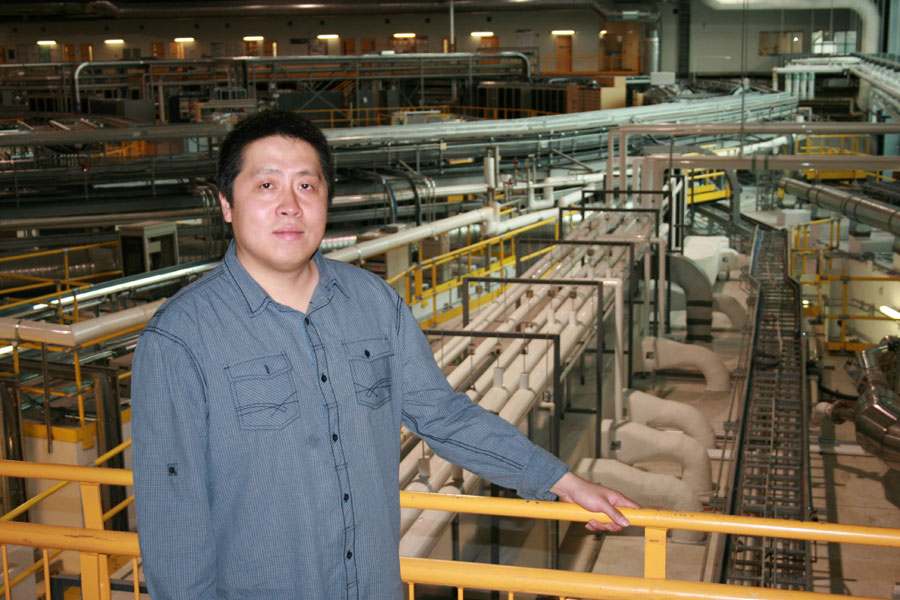Providing answers to experiments
While they may not shout out “is there a theoretical physicist in the house?,” scientists from across Canada and around the world often end up at Yansun Yao’s office at the Canadian Light Source, seeking his help.
By University Communications "Theoreticians provide answers to the experiments," said Yao, resident condensed matter theorist at the synchrotron. "The experiments give them data and they say ‘can you help us interpret this data?' This is more the service aspect of what I do."
"Theoreticians provide answers to the experiments," said Yao, resident condensed matter theorist at the synchrotron. "The experiments give them data and they say ‘can you help us interpret this data?' This is more the service aspect of what I do."Yao's own research centres on computational materials discovery, particularly with regard to the behavior of materials under high temperature and high pressure. He cites a familiar example: ordinary graphite is transformed by intense heat and pressure into diamond, and it stays diamond when the extreme conditions are removed.
The idea is to use theory to predict properties and behavior of materials.
"For my PhD research, I was really inspired by the work of (U of S Canada Research Chair) John Tse," Yao said. "He's a great theoretician, and he showed me that theory's very useful and can lead the experiments. I realized working with John that you can actually do predictions."
Yao grew up in Beijing and studied at the Beijing Institute of Technology, completing his bachelor's and master's degrees there before coming to the U of S for his doctorate. He and his wife, Hongbin Zhang, moved to Ottawa where Yao worked for the National Research Council before returning to Saskatoon. Yao is now assistant professor position in the Department of Physics and Engineering Physics, while Zhang works in the Department of Economics.

